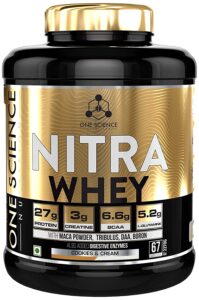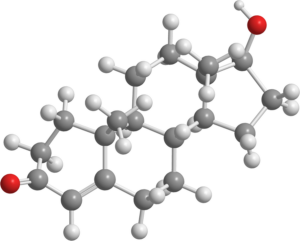testosterone is a Sex steroid hormone that is a member of the androgen family, which are also known as anabolic steroids. Testosterone is produced mainly in the testes, but also in the ovaries and adrenal cortex. The adrenal glands produce the hormone dehydroepiandrosterone (DHEA), which our body transforms into testosterone and estrogen. Testosterone is found in both men and women. More specifically, the testicles in people assigned male at birth (AMAB) and the ovaries in people assigned female at birth (AFAB). It is responsible for a wide variety of functions. Hypothalamus and Pituitary gland controls the amount of testosterone that is produced and released by the gonads.
TESTOSTERONE IN MALES:
Testosterone is the primary male sex hormone that regulates sex differentiation, sex characteristics, spermatogenesis, muscle mass, red blood cell production, and fertility. Testosterone in males is synthesized and secreted in the Leydig cells of male testes about 5-12mg/day. Testosterone is also involved in regulating secondary male characteristics, which are responsible for masculinity. These secondary sex characteristics include male hair patterns, vocal changes, and voice deepening, anabolic effects include growth spurts in puberty and skeletal muscle growth (stimulate protein synthesis)
What are normal testosterone levels in men?
There are mainly two types of testosterone observed which includes free
testosterone and protein-bound testosterone. Together gives total testosterone. A
normal reading of total testosterone falls between 300-1000ng/dL.
What are the efforts of high testosterone levels in males?
High testosterone production by the testicles is called hypergonadism. High
testosterone levels can cause severe problems in males such as enlarged prostate, body hair growth, mood disturbance, low sperm counts, and acne.
TESTOSTERONE IN FEMALES:
Testosterone plays important for everything from the maintenance of female
reproductive tissue to bone health. Female testosterone is synthesized in the ovary and adrenal gland about 0.25-0.5 mg/day. Women need small amounts of it as part of the mix of hormones that keep the mood, energy levels, maintain sex drive and bodily functions running smoothly. Functions of testosterone in women’s Body includes Supporting bone growth and strength, promoting cognitive health, maintenance sex drive.
What happens when a women’s testosterone levels are low?
Testosterone levels decrease between the ages 20-40 in women, with profound reduction at the time of menopause. Post-menopausal women experience lower testosterone levels that can cause a decrease in sex drive, and increased risk for bone loss, fatigue, osteoporosis, and fractures.
What happens when a women’s testosterone levels are high?
High levels of a type of androgen known as free testosterone can be associated with polycystic ovarian syndrome (PCOS). PCOS can cause the symptoms like irregular menstrual cycle, infertility, excess hair growth, ovarian cysts, skin problems, and miscarriage.
What is low Testosterone?
Testosterone is an important hormone responsible for male sexual characteristics and overall well-being. However, some men experience low testosterone levels, a condition known as low testosterone or testosterone deficiency (TD). In this article, we are going to describe the causes, symptoms, diagnosis, and treatment options for this common hormonal problem.
Why Testosterone Therapy (TT)?
Testosterone therapy (TT) is a medical procedure used to treat low testosterone levels in men. The goal of this therapy is to restore testosterone to a normal range, relieve symptoms associated with low testosterone, and improve overall quality of life.
How Common is Low Testosterone in Men?
Low testosterone is more common than you think. It affects millions of men worldwide, especially as they age. Various factors, such as lifestyle choices, medical conditions and genetics, can contribute to the development of low testosterone.
Symptoms of Low Testosterone
When testosterone levels drop below normal, a variety of physical and emotional symptoms can occur. Some specific signs and symptoms of testosterone deficiency include:
Testosterone replacement therapy (TRT)
TRT is also called androgen replacement therapy, It works by replacing the testosterone that the body is not producing. TRT may include Trusted Sources:
Injectable testosterone:
Injectable testosterone, such as testosterone cypionate (Depo-Testosterone) and
testosterone undecanoate, contain testosterone esters suspended in oil.
Esters are a type of biological compound.
Transdermal testosterone:
Transdermal testosterone includes medicated patches (Androderm) and gels (AndroGel) that are applied directly to the skin.
Oral testosterone capsules:
Jatenzo Trusted Source is an oral testosterone capsule recently approved by the Food and Drug Administration for treating hypogonadism due to underlying medical conditions.
TESTOSTERONE SUPPLEMENTS:
supplements are those which may help to increase the level of testosterone in the body produces. Which includes:
1. D-aspartic acid
D-aspartic acid is an amino acid that plays a role in secreting and releasing
several different types of hormones, including testosterone.
2.Dehydroepiandrosterone
Dehydroepiandrosterone is a steroid hormone that is produced by the adrenal glands. It acts as a precursor hormone having minimal effects until the body converts it into other hormones, such as estrogen or testosterone. Due to its minimal effects, DHEA is a popular ingredient in testosterone-boosting supplements.
Click Here To Buy
TESTOSTERONE-BOOSTING FOODS: Certain foods, like fatty fish, leafy greens, eggs, cocoa products, Coconut, and Olive oil. berries, Pomegranate, Garlic, Honey, Vitamin-enriched milk, other dairy products, Ginger, and Onions may help increase testosterone to a healthy level.
TESTOSTERONE LEVELS TEST:
A testosterone levels test is a test that measures the amount of testosterone in a sample of blood. Testosterone is also known as a “male” sex hormone, but females have testosterone in smaller amounts when compared to men. There are three types of blood tests that help to measure these different forms of testosterone:
1. A total testosterone test that measures the amount of free testosterone and
testosterone which is bound to proteins. This is the most common type of test
commonly used.
2. A free testosterone test that measures only the “active” form of testosterone. This test is less common, but it is useful for diagnosing certain medical conditions.
3. A bioavailable testosterone test measures the amount of free
testosterone and testosterone loosely attached to a blood protein called
albumin. This test isn’t commonly done. But like a free testosterone test, it may
help diagnose certain medical conditions.
What is the testosterone test used for?
To diagnose the cause of symptoms that could be from testosterone levels that are too high or too low In children and teens, to find out what’s causing:
Early puberty Delayed puberty
TESTOSTERONE INJECTIONS:
Testosterone injections are those types of injections that are isolated from
testosterone. Testosterone hormone is present in both males and females, but the
levels are naturally higher in males compared to women. Testosterone injections are hormonal treatments. Their primary use is for the treatment of sexual dysfunction in males and postmenopausal symptoms in females who are having testosterone deficiency. Transgender men and nonbinary people also use testosterone injections as part of masculinizing therapy.
Types of testosterone injection available
Testosterone injections include several varieties. These include:
• Testosterone cypionate (Depo-Testosterone)
• Testosterone enanthate (Xyosted and also available in its generic form)
• Testosterone undecanoate (Aveed, which is a long-acting formulation)
• Testosterone Pellets (Testopel)
Testosterone enanthate injection (Xyosted) comes in a solution form (liquid) which is injected subcutaneously (under the skin) once a week.


